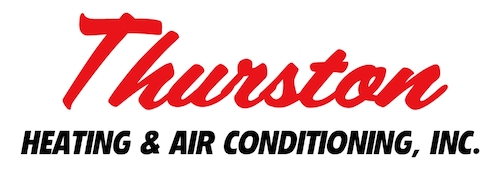
You shouldn’t need to sacrifice comfort or spend a lot to keep your residence at a pleasant temperature during hot days.
But what is the right temperature, exactly? We go over ideas from energy pros so you can determine the best temperature for your loved ones.
Here’s what we advise for the most energy-efficient setting for air conditioning in Kearney.
Recommended Thermostat Settings for Summer
Most families find placing the thermostat at 72-73 degrees is ideal. However, if there’s a major difference between your interior and outside warmth, your electrical expenses will be higher.
These are our suggestions based on the U.S. Department of Energy (DOE) and ENERGY STAR®.
While at home: 78 degrees. While that sounds warm, there are approaches you can keep your house cool without having the air conditioner on constantly.
Keeping windows and blinds closed during the day keeps chilled air where it belongs—within your home. Some window treatments, such as honeycomb shades or plantation shutters, are made to give added insulation and improved energy conservation.
If you have ceiling fans in your residence, the DOE says you can raise thermostat temps about 4 degrees higher without sacrificing comfort. That’s since they freshen with a windchill effect. Since they cool people, not rooms, turn them off when you leave a room.
If 78 degrees still seems too uncomfortable initially, try running a test for approximately a week. Begin by raising your temperature to 78 degrees while you’re home. Then, progressively lower it while using the advice above. You could be surprised at how refreshed you feel at a hotter temperature setting.
While away: 88 degrees. There’s no need to keep the air conditioning working all day while your house is empty. Turning the temperature 7–10 degrees hotter can save you as much as 5–15% on your air conditioning bills, according to the DOE.
When you arrive home, don’t be tempted to put your thermostat colder than 78 to cool your home more rapidly. This isn’t useful and usually produces a more expensive electricity expense.
A programmable thermostat is a good method to keep your temp in check, but you have to set programs. If you don’t set programs, you run the risk of forgetting to change the set temperature when you go.
If you want a convenient fix, consider getting a smart thermostat. This thermostat links with your phone, so it knows when you’re at your house and when you’re away. Then it automatically modifies temperature settings for the best savings. How much exactly? An estimated $180 each year on heating and cooling, according to ENERGY STAR.
Another perk of installing a smart thermostat? You can use your phone to watch and change temperature settings from just about anywhere.
While sleeping: Around 70 degrees. While ENERGY STAR suggests 82 degrees, that may be too uncomfortable for the majority of families. The majority of people sleep better when their sleeping area is chilled, so that’s why the National Sleep Foundation recommends 60–67 degrees. But that may be too cold, depending on your clothing and blanket preference.
We recommend following a comparable test over a week, setting your thermostat higher and slowly decreasing it to find the best setting for your family. On pleasant nights, you might learn keeping windows open at night and using a ceiling fan is a superior option than operating the air conditioner.
More Methods to Conserve Energy During Hot Weather
There are additional methods you can conserve money on air conditioning bills throughout warm weather.
- Upgrade to an energy-efficient air conditioning system. Central air conditioners only last about 12–15 years and become less efficient as they become older. An upgraded air conditioner can keep your residence more comfortable while keeping electrical expenses small.
- Set annual air conditioner service. Annual air conditioner maintenance keeps your equipment working like it should and could help it work at greater efficiency. It can also help lengthen its life cycle, since it enables technicians to find small issues before they cause a major meltdown.
- Replace air filters frequently. Read manufacturer instructions for changing your air filter. A clogged filter can lead to your system short cycling, or turn on and off too often, and drive up your electricity.
- Measure attic insulation levels. Almost 90% of homes in the USA don’t have adequate insulation, according to the Insulation Institute. The majority of southern climates need 13–14” of attic insulation, while northern climates require 16–18”.
- Have your ductwork examined. Ductwork that has loosened over time can leak cold air into your attic, walls or crawl space. This can result in major comfort issues in your house, like hot and cold spots.
- Seal holes, doors and windows. Keep humid air in its place by sealing holes. You can also caulk or weather strip doors to keep more conditioned air indoors.
Use Less Energy During Warm Weather with Thurston Heating & Air Conditioning
If you need to use less energy during hot weather, our Thurston Heating & Air Conditioning professionals can help. Get in touch with us at 308-624-3485 or contact us online for additional information about our energy-saving cooling solutions.
